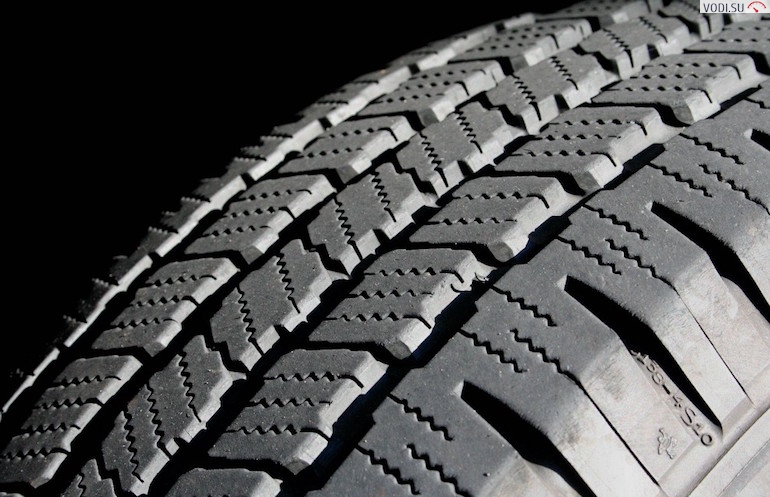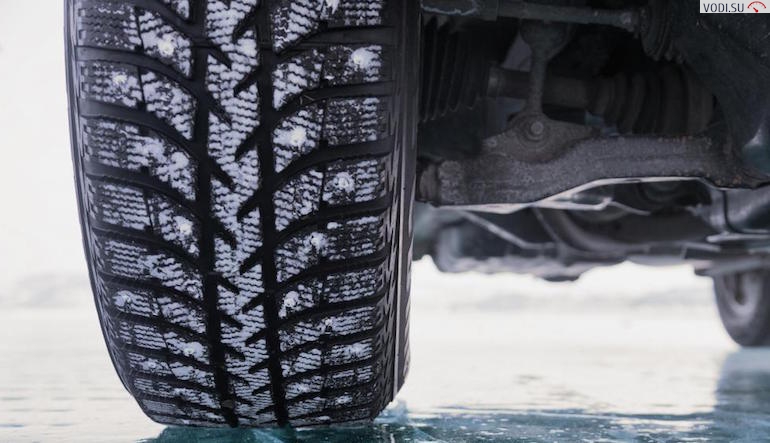
what is better to buy? Overview of winter tires
On the eve of winter, motorists face many questions, and one of the most important is the transition to winter tires. As we wrote earlier on our Vodi.su portal, there are three main types of winter tires:
- Scandinavian, she is Arctic;
- European;
- studded.
The first two types are popularly called Velcro, although a more correct name is friction tires. Which of them to choose - we will try to consider this issue in our new article.
What is Velcro?
Friction tires are called Velcro because of their tread. It has many small slots, thanks to which the rubber literally sticks to the snow. In addition, they have lugs and longitudinal grooves to remove moisture and excess heat.

Advantages of friction tires:
- they practically do not make noise when driving on snowy roads;
- maximum comfort;
- due to the special composition of rubber, they can be operated both at positive temperatures (up to + 7- + 10 degrees) and at sub-zero temperatures;
- ideal for driving on loose snow, dry asphalt or slush.
The special tread pattern ensures constant self-cleaning of tires, snow and dirt are cleaned from the slots, so excellent flotation is maintained in almost all weather conditions.
What is Studded Rubber?
Its main feature is spikes. Spikes can be of three types:
- round;
- multifaceted;
- square.
The main advantages of studded tires:
- excellent cross-country ability on surfaces covered with ice, rolled snow;
- durability - if you buy good tires from well-known manufacturers, then they last 3-5 seasons;
- provide good dynamics on icy roads.
It is studded tires that are recommended for beginners in the winter, because thanks to it, the car's handling is significantly improved, and the braking distance is reduced.
Common stereotypes about spikes and Velcro
Many motorists rely on their experience and the stories of other, more experienced drivers when choosing tires. It is generally believed that the Arctic Velcro is suitable for the city, for loose snow, but on ice it shows itself from the worst side.
It is also believed that spikes are better suited for driving on icy highways. On dry or wet pavement, studded tires are of absolutely no use.
All these stereotypes arose back in those years when in Russia they were little familiar with high-quality tires from European and Japanese manufacturers such as Nokian, Goodyear, Bridgestone, Yokohama, Michelin and many others.
However, numerous tests have been carried out, which have shown that all these stereotypes do not always correspond to reality. Today, rubber is produced that is equally well suited for different conditions.

Comparison of studded and friction rubber
So, when braking on clean asphalt, the length of the Velcro braking distance was 33-41 meters. The spikes also showed a result of 35-38 meters. During the tests, expensive tires of well-known brands were used: Nokian, Yokohama, Bridgestone. One point is also interesting: the domestic studded Kama Euro-519 practically did not yield to the friction tires of Yokohama and Michelin.
Approximately the same results were obtained on wet and completely dry pavement. Although, as we know, studs on dry pavement should be significantly inferior to Velcro.
What does this mean?
Several important points can be highlighted:
- no need to believe stereotypes;
- well-known companies conduct numerous studies, trying to achieve the ideal;
- high-quality rubber (the key word is high-quality) is developed taking into account the temperature and weather conditions in certain regions.
Similar tests were carried out in other conditions. The braking distance when braking from a speed of 25-50 km / h turned out to be approximately equal on snow-covered and ice-covered tracks.
Why do spikes perform so well on pavement? The thing is that the spikes, like the claws of a cat, can retract and protrude outward. If the car is driving on packed snow or ice, the spikes protrude and cling to it. If the car rides on a hard surface, then they are drawn inward.
However, the driver must know the speed limits well. So, if you accelerate to certain speeds, then at one moment the grip is lost and neither the friction clutch nor the spikes will help you avoid skidding.
Other types of tests were also carried out, such as which tires are best for fast movement on icy or slush-covered tracks. Here it turned out that spikes really provide good handling on ice. A car with such tires passed the ice circle faster at a speed of 25-30 km / h. With spikes, you can also accelerate faster or go up an icy hill.
Conclusions from the conducted tests
Studded tires are harder than friction tires. This is done in order to securely fasten the spikes, which, like the claws of a cat, can protrude outward, or sink inward under the weight of the car on a hard surface.

However, the hardness of rubber plays a cruel joke:
- at temperatures up to -15-20 degrees, studs show excellent results;
- at temperatures below 20 below zero, the ice becomes too hard and the spikes practically do not protrude, that is, the rubber loses all its advantages.
Hence the conclusion - friction rubber is better suited for driving at temperatures below 20 degrees, both on ice and on snow. Many drivers living in Siberia and in the northern regions of the Russian Federation prefer Velcro, which show excellent results.
Accordingly, if in your region of residence temperatures rarely fall below -20 degrees, while you mainly drive on ice, then it is better to choose spikes. In the city, the clutch will remain the preferred option. Also, do not forget that more fuel is consumed due to driving on studded tires.
From the above, we come to the following conclusions:
- for the city the best option is a friction clutch;
- spikes should be used if you go on long trips on icy roads;
- choose high-quality expensive tires, which are included in numerous ratings;
- change the rubber in a timely manner (at positive temperatures, it wears out faster - this applies to both Velcro and spikes).
If you often travel out of town in the winter, then the spikes will help you avoid drifts and accidents. But the most important thing is to stick to speed limits, remember that on ice the braking distance increases many times over, and the car can lose control if you accelerate very quickly.
Loading…